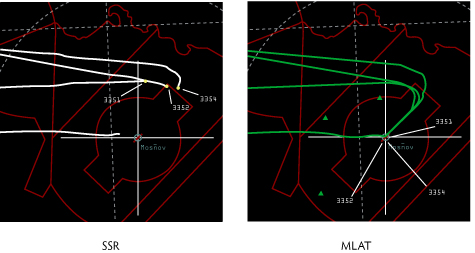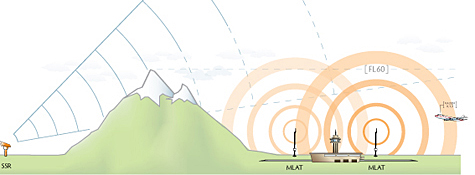| The chosen location for the first wide area installation was Ostrava, the nation’s third busiest airport. Ostrava was surrounded by mountains, which prevented any surveillance coverage below FL60 (6,000 feet) from the closest secondary surveillance radar (SSR). Therefore, the airport’s terminal airspace required aircraft to be subject to time-consuming control procedures, which drastically reduced throughput and efficiency. In addition, there was a need to improve radar data reliability in the northeast sector of the Prague FIR. The conventional solution would have been to install a local SSR, but more detailed analysis of the requirement showed that multilateration, which had not been previously used for airspace surveillance, had distinct advantages. Based on intensive evaluations undertaken in 1998, ANS officials determined that multilateration was the way ahead. As Petr Materna, ANS Director General until his retirement in late 2007, and a 34 year veteran of Czech aviation and air navigation services, put it, “We were one of the first to recognize the potential of this new concept — its technical potential — because it provides very accurate information, which can be amalgamated with radar in the system. It was also a very cost efficient solution, and with the pressure on reducing the cost of air traffic management, it was a system which could help very much.” The installation, which was completed in 2002, consisted of five receiver stations and two interrogators, and included remote control and monitoring systems at Ostrava. The system was type certified by the national Civil Aviation Authority against ICAO Annex 10 interrogation and Eurocontrol radar surveillance standards. Flight tests established coverage out to 80 NM, with surveillance down to the Ostrava airport surface. But subsequent testing brought even better news. The system’s stability and accuracy allowed the CAA to certify it for 3 NM terminal traffic separation, rather than the more typical 5 NM under SSRs. No other terminal area multilateration system in the world has been certified to the 3 NM standard. Continued | | 

|

